I went for a short bike ride the other day, on what happened to be the winter solstice. The weather was discouraging. We’d had over a foot of nice powdery snow and some great cross-country skiing, but it had warmed up to just above freezing. It was raining lightly with predicted heavy freezing rain later in the day, followed by days of single-digit temperatures.
Considered strictly as a bike ride, it wasn’t much. I layered on some old clothes, walked my old Univega down the steep dirt road from my house to the paved road, and headed south to Marshfield village, dodging patches of ice when I could and easing carefully over them when I had to. Once I got to Marshfield, I turned around and rode to Cabot Village. Then I turned around and came home, moderately wet and with a big streak of rear-wheel-spatter up the back of my wind shell. Total distance, including a mile and half of walking up and down the hill: maybe nine or ten miles.
Still, I felt pretty good about the day, because it marked the completion of eight consecutive years of monthly bike rides. Since January of 2006, I’ve gone for at least one ride every month—usually, but not always, with my friend Mark, who has the same streak going that I do. That’s not much of a challenge from about April to November, when I ordinarily ride several times a week. But December, January, February, and March can be problematic. But I’ve developed a few basic rules for winter riding that seem to help:
Rule One: Don’t hesitate. Seize the first day that looks halfway decent, with the roads clear of snow and temperatures above freezing, or at least not too far below freezing.
This is especially important early in the winter. November weather often hangs on into the first week of December or so, and while it’s typically cold and raw (see previous post, “Old Guys, Steep Hills”), it’s a lot better than the solid cold and snow that comes along later. At worst, you’ll take a ride in marginal conditions early in the month and then get a much nicer day later on. If that happens, you can go for another, longer ride. What you want to avoid is passing up a spell of so-so weather and having to go out on January 31 in a stiff wind with the temperature hovering around zero. I’m not speaking hypothetically here.
Rule Two: Leave the Hetchins in the garage.
Winter riding is hard on a bike, so it’s best to have a dedicated winter beater like my Viva Sport. Sand and road salt and slush gets in everything. When I return from a winter ride, I spend half an hour or so cleaning things off, first by rinsing the whole bike with warm water from a garden watering can (it's best to avoid pressurized water from a hose because it can force water into the bearings). Once the grit and salt are gone, I dry it with paper shop towels and lube the chain, derailleurs, and brakes.
Even so, exposure to road salt probably shortens the life of brake and shifter cables. A singlespeed bike does away with some damage-prone hardware and makes maintenance a little easier. I tried that approach for most of one winter and found that it worked pretty well. Eventually, though, I went back to derailleurs because not having them limited me to flatter terrain, which is in short supply around here. True fact: Vermont is full of unnamed hills and mountains, but the much rarer expanses of flat river-bottom land almost always do have names.
Rule Three: Be visible.
This is mostly a matter of safety, but ego creeps into it, too: The more easily people can see you, the more easily they can marvel at your awesomeness for riding in winter weather.
On the day of my solstice ride, the sun rose at a little after 7:20, set at about 4:15, and between times didn’t get much work done through the heavy cloud cover. A blinking red light in back makes you much more visible, and a white light in front doesn’t hurt, either.
Once the snowbanks start to pile up, visibility at intersections is limited. Keep an out out for traffic approaching entering from driveways and sideroads, and keep your head up. Slow and steady is the way to go in winter. Fortunately—because speed generates a face-freezing wind that discourages further speed—this to be self-reinforcing in cold weather.
I'm a sensitive guy, so I realize that my winter riding experience will leave some readers unimpressed. I mean, what about those Iditabikers in Alaska, where it gets really cold and dark? What about those intrepid winter bike commuters in Minnesota who ride to work and back through the ice and sleet and storm every day all winter, not just one measly day a month? Why bother to even mention my meager experience with cold-weather riding?
In my defense, I will note that because I work at home, the glory of daily commuting is unavailable to me. But I would also argue that the very infrequency of my winter riding is what makes it so… so… well, “heroic” is a strong word, but I can’t think of another that quite fits here.
Think about it: To an experienced airline pilot, landing a Boeing 767 is all in a day’s work. It happens all the time, so no one thinks anything of it. But if both pilots on a particular flight were to be temporarily struck down by a bad batch of chicken salad, leaving a freelance editor to take the controls and guide the plane to safety, that would be news. That brave editor would be lauded, feted, and lionized.
Well, that’s me. I don’t ride often in the winter, and I’m not very good at it, but I keep doing it anyway. Once a month, just like clockwork. You’ve got to admire that kind of determination.
Considered strictly as a bike ride, it wasn’t much. I layered on some old clothes, walked my old Univega down the steep dirt road from my house to the paved road, and headed south to Marshfield village, dodging patches of ice when I could and easing carefully over them when I had to. Once I got to Marshfield, I turned around and rode to Cabot Village. Then I turned around and came home, moderately wet and with a big streak of rear-wheel-spatter up the back of my wind shell. Total distance, including a mile and half of walking up and down the hill: maybe nine or ten miles.
Still, I felt pretty good about the day, because it marked the completion of eight consecutive years of monthly bike rides. Since January of 2006, I’ve gone for at least one ride every month—usually, but not always, with my friend Mark, who has the same streak going that I do. That’s not much of a challenge from about April to November, when I ordinarily ride several times a week. But December, January, February, and March can be problematic. But I’ve developed a few basic rules for winter riding that seem to help:
Rule One: Don’t hesitate. Seize the first day that looks halfway decent, with the roads clear of snow and temperatures above freezing, or at least not too far below freezing.
This is especially important early in the winter. November weather often hangs on into the first week of December or so, and while it’s typically cold and raw (see previous post, “Old Guys, Steep Hills”), it’s a lot better than the solid cold and snow that comes along later. At worst, you’ll take a ride in marginal conditions early in the month and then get a much nicer day later on. If that happens, you can go for another, longer ride. What you want to avoid is passing up a spell of so-so weather and having to go out on January 31 in a stiff wind with the temperature hovering around zero. I’m not speaking hypothetically here.
Rule Two: Leave the Hetchins in the garage.
Winter riding is hard on a bike, so it’s best to have a dedicated winter beater like my Viva Sport. Sand and road salt and slush gets in everything. When I return from a winter ride, I spend half an hour or so cleaning things off, first by rinsing the whole bike with warm water from a garden watering can (it's best to avoid pressurized water from a hose because it can force water into the bearings). Once the grit and salt are gone, I dry it with paper shop towels and lube the chain, derailleurs, and brakes.
Even so, exposure to road salt probably shortens the life of brake and shifter cables. A singlespeed bike does away with some damage-prone hardware and makes maintenance a little easier. I tried that approach for most of one winter and found that it worked pretty well. Eventually, though, I went back to derailleurs because not having them limited me to flatter terrain, which is in short supply around here. True fact: Vermont is full of unnamed hills and mountains, but the much rarer expanses of flat river-bottom land almost always do have names.
Rule Three: Be visible.
This is mostly a matter of safety, but ego creeps into it, too: The more easily people can see you, the more easily they can marvel at your awesomeness for riding in winter weather.
On the day of my solstice ride, the sun rose at a little after 7:20, set at about 4:15, and between times didn’t get much work done through the heavy cloud cover. A blinking red light in back makes you much more visible, and a white light in front doesn’t hurt, either.
Once the snowbanks start to pile up, visibility at intersections is limited. Keep an out out for traffic approaching entering from driveways and sideroads, and keep your head up. Slow and steady is the way to go in winter. Fortunately—because speed generates a face-freezing wind that discourages further speed—this to be self-reinforcing in cold weather.
I'm a sensitive guy, so I realize that my winter riding experience will leave some readers unimpressed. I mean, what about those Iditabikers in Alaska, where it gets really cold and dark? What about those intrepid winter bike commuters in Minnesota who ride to work and back through the ice and sleet and storm every day all winter, not just one measly day a month? Why bother to even mention my meager experience with cold-weather riding?
In my defense, I will note that because I work at home, the glory of daily commuting is unavailable to me. But I would also argue that the very infrequency of my winter riding is what makes it so… so… well, “heroic” is a strong word, but I can’t think of another that quite fits here.
Think about it: To an experienced airline pilot, landing a Boeing 767 is all in a day’s work. It happens all the time, so no one thinks anything of it. But if both pilots on a particular flight were to be temporarily struck down by a bad batch of chicken salad, leaving a freelance editor to take the controls and guide the plane to safety, that would be news. That brave editor would be lauded, feted, and lionized.
Well, that’s me. I don’t ride often in the winter, and I’m not very good at it, but I keep doing it anyway. Once a month, just like clockwork. You’ve got to admire that kind of determination.
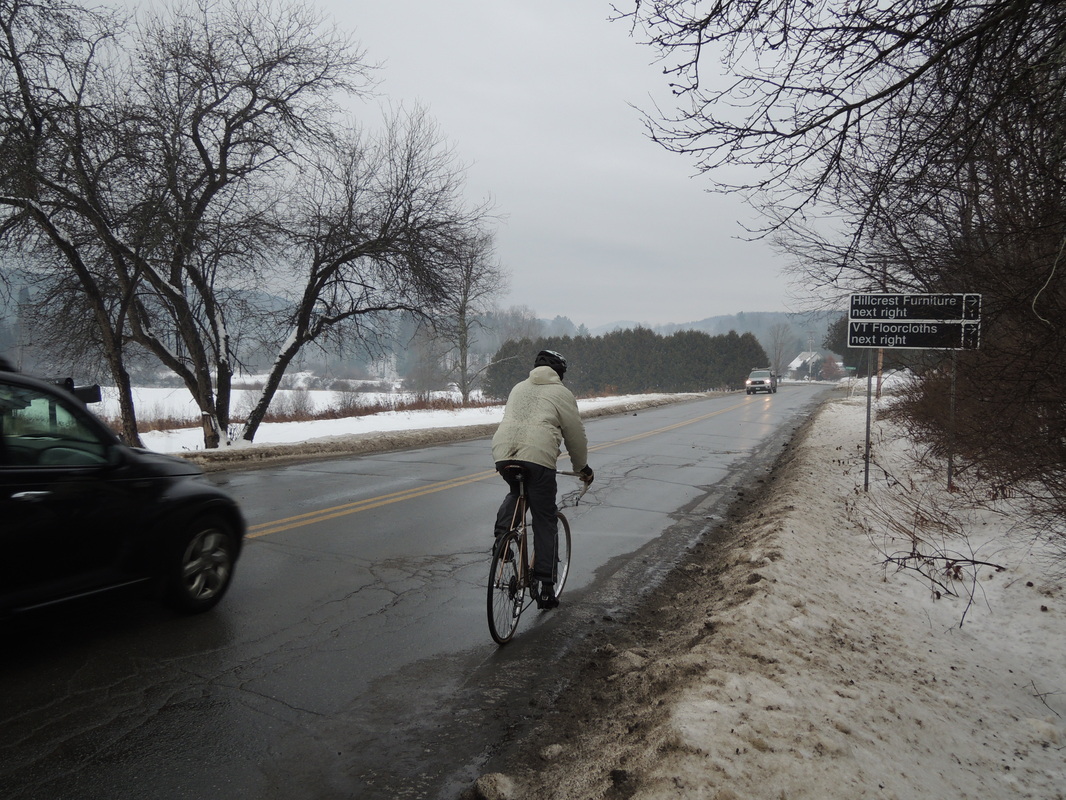
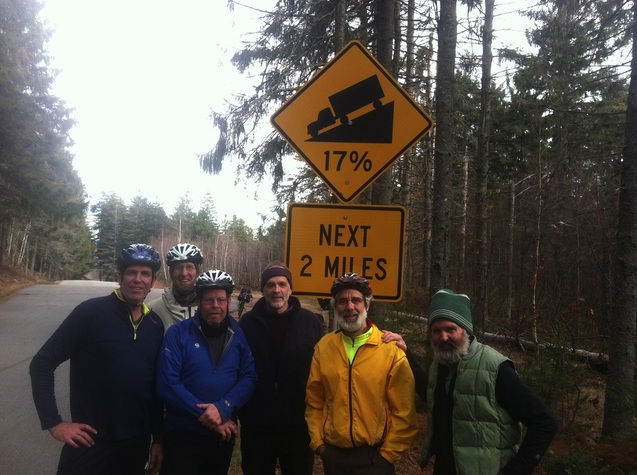
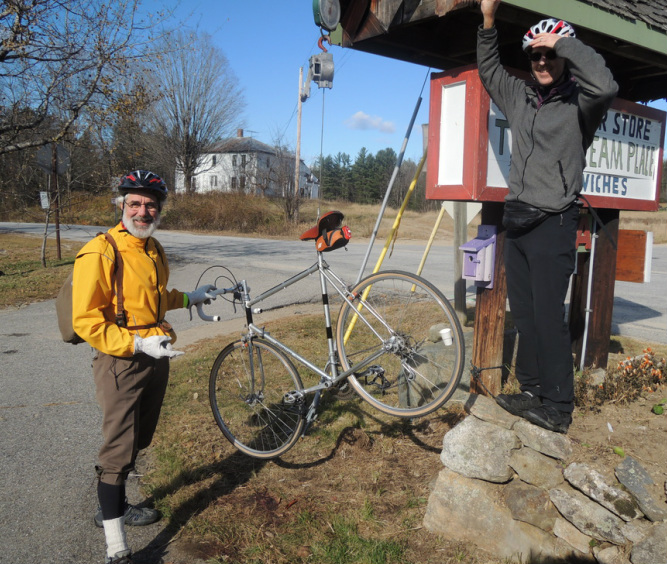
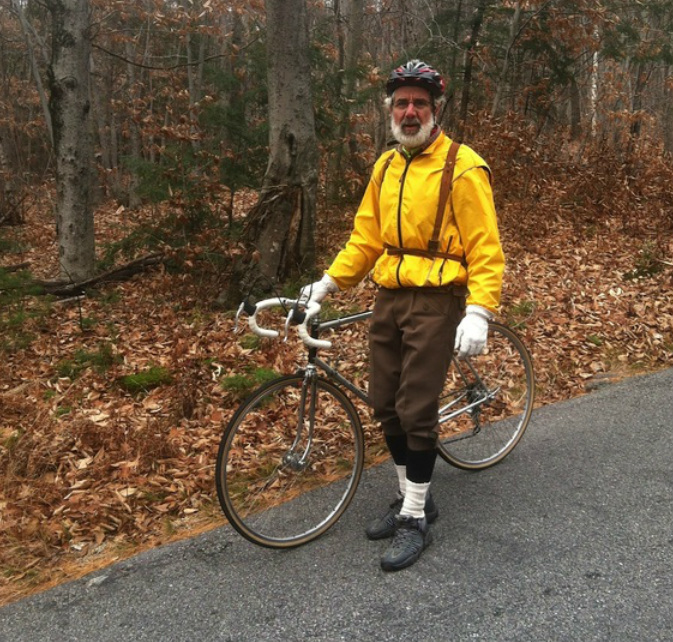
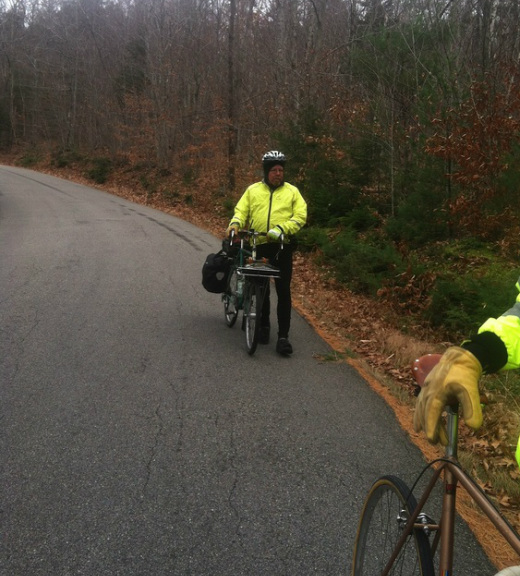
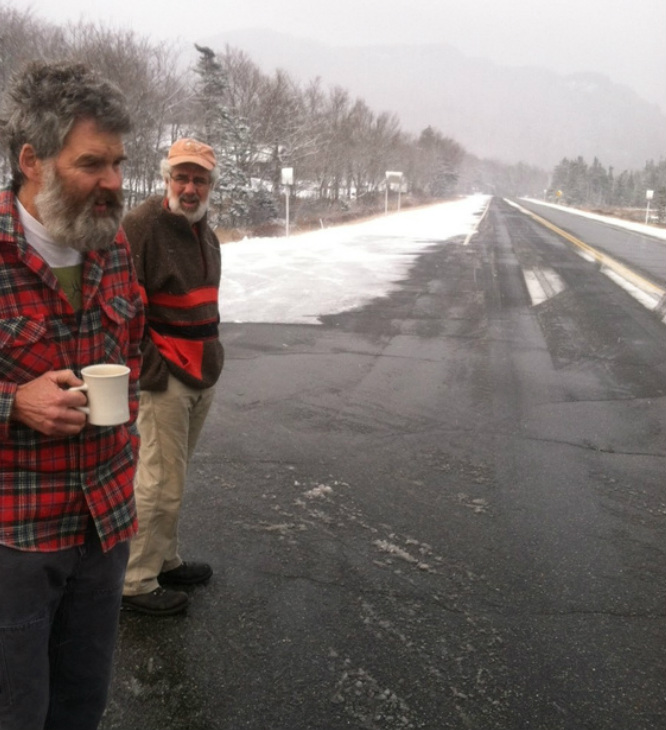
 RSS Feed
RSS Feed